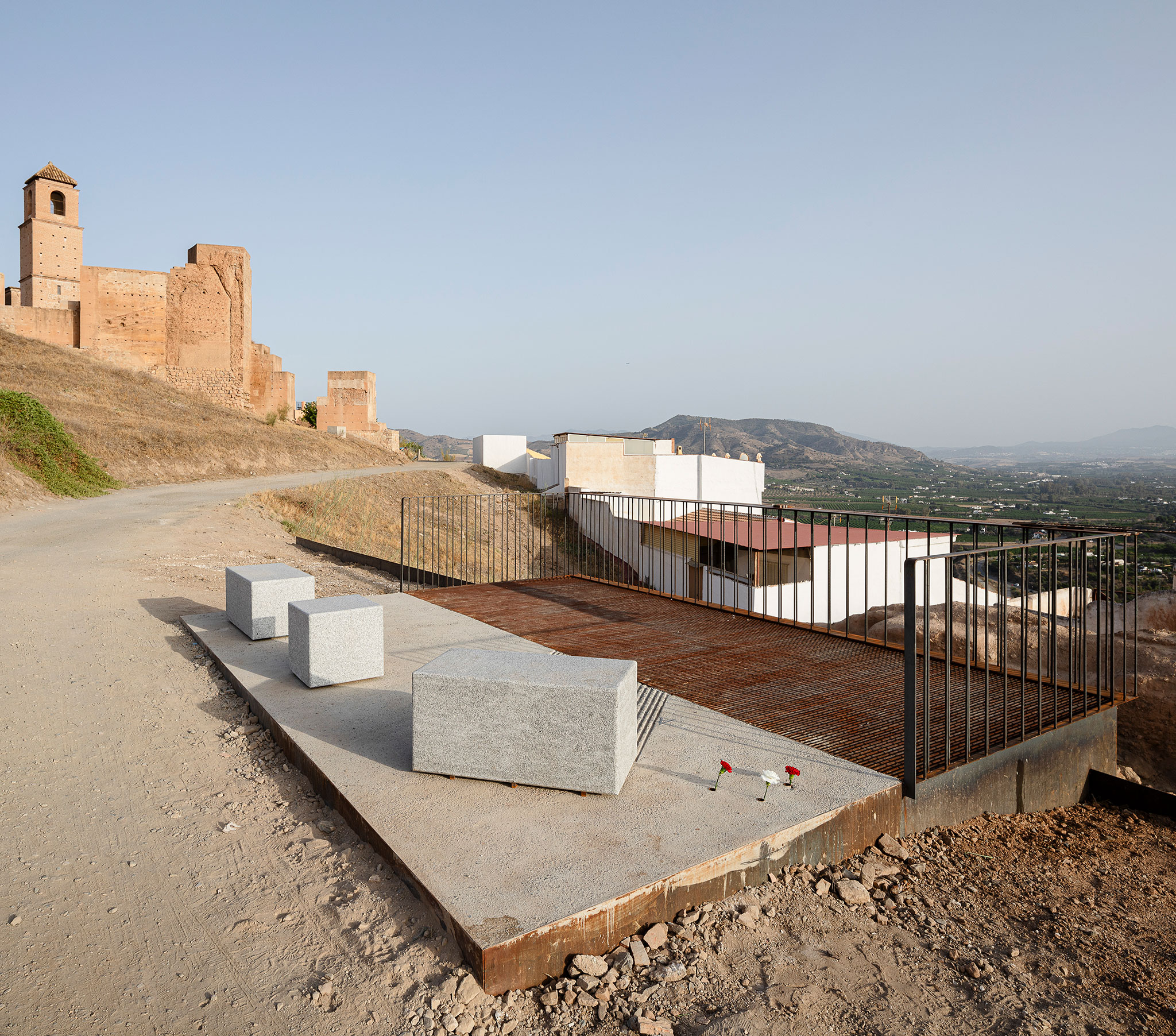From the garden of time, the canvas of the wall becomes visible in dialogue with the castle thanks to the demolition of the nearby fences. The excavation led to the discovery of a section of the Iberian wall with a different rig and direction than the canvas and large ashlars at its base of Roman origin, while inside the remains of 15th-century homes were found.

Enhancement of the Arab Tower and Wall Canvas in the Cerro de las Torres by WaterScales arquitectos. Photograph by Fernando Alda.
Project description by WaterScales arquitectos
On the Cerro de las Torres, dominated by the Arab castle of Álora (8th century), vestiges of the third walled enclosure awaited. Among them, a section of wall hidden behind some fences and a tower imprisoned by an old house. Adding value to them has been, first, freeing them from the elements that hid them, then, healing their facings and, finally, preparing their environment to allow them to transmit their history. The two pieces are presented in dialogue thanks to a tour of the hill that links them.
Threshold of Cerro de las Torres. Tower and garden of times
Once the house that housed it was demolished, the tower presides over a new space that will serve as access for travelers to the hill of the towers.
The tower is a sum of textures and geometries that transmit its constructive evolution. It is crowned with an ex novo brick cube on the sandstone stone lining from the Christian period, thus protecting the deterioration of the Arab wall heart. Its setback shows its different historical alignment. The ashlar lining proudly shows its material unlike some walls of the house, whitewashed with a similar tone to veil its structure and show its different origin.

Enhancement of the Arab Tower and Wall Canvas in the Cerro de las Torres by WaterScales arquitectos. Photograph by Fernando Alda.
With the main door of the house blocked, at the threshold, space, you access through a threshold, room, a garden of times, empty of construction, but full of suggestions. The garden is the emergence of the values that history has bequeathed, arranged in bands that illustrate the typology of the house with a patio defined during the historic Christian “repartition”. A floating carpet of deactivated concrete guides our steps to perceive the succession of domestic spaces; from the interior, with remains of ceramic pavements, to the patio and its small garden, currently a resting place with the sound of a fountain under an almond tree, as well as the trace of an old stable.
The party walls, with white textures, current or historical, serve as a frame that frames the space. The north one has precise brick leaves, and the south one has a stone texture and domestic geometry. There, a vertical stripe in its color makes visible the geometry of the canvas, hidden in the adjacent house, thus indicating access to the third wall enclosure.
Regeneration of the landscape of the wall canvas
With the nearby fences demolished and the wall walls consolidated, the canvas perceives the protagonist of the hill in dialogue with the castle. The excavation of its surroundings yielded various finds of interest, among them, a section of the Iberian wall with a different rig and direction than the canvas and large ashlars at its base of Roman origin. On its interior, after the coastal path, remains of houses from the 15th century are discovered.

Enhancement of the Arab Tower and Wall Canvas in the Cerro de las Torres by WaterScales arquitectos. Photograph by Fernando Alda.
The paths that weave through the hill lead to the canvas. A carpet of rounds makes it easier to contemplate the powerful volume of its exterior face. Next to it, some stone steps show the way to perceive it about the castle.
Its intrados are understood from an upper interpretation area as a viewpoint. Thanks to an informative railing with aerial and perforated texts, events in the landscape and the site are named and indicated. Behind the viewpoint, a rest and contemplation area with three granite blocks as benches is a memorial that guides us.
We have tried to interpret the heritage landscape of Álora, visualize its construction process, and transmit its message through slight nuances that enrich the space. The design and material decisions are largely due to didactic intentions relevant to the traveler.


























































